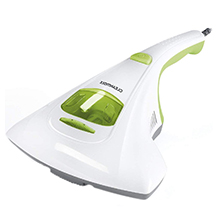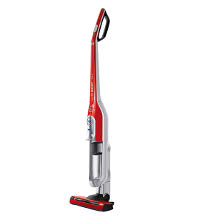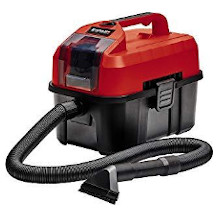Robot vacuum cleaner purchasing advice: how to choose the right product
- The most important facts in a nutshell
- Robot hoovers not only relieve their users of some of the housework, but thanks to their compact size they can also reach areas that a conventional floor hoover cannot reach.
- Equipped with a timer function, the electronic cleaning aids can be programmed to start the cleaning process automatically at a later time, for example when you are not at home.
- Depending on the driving strategy, vacuum robots move either unsystematically, i.e. chaotically, or systematically, i.e. according to a certain pattern.
- Via infrared, ultrasonic or laser sensors, the autonomous household aids recognise whether they are approaching an obstacle or a precipice and change their direction of travel if necessary.
- To ensure that the device does not give up the ghost in the middle of the process or is ready for use again as quickly as possible, a model with a long battery life combined with a short charging time is recommended.
- Practical extras such as an additional wiping function, control via app or voice command as well as special brushes and attachments for pet hair provide additional comfort.
Robot hoovers – the autonomous household helpers
For many, housework is a torment that is gladly put off. Vacuuming, in particular, is one of the tasks that has to be done almost daily, as a layer of dust on the floor is unpleasant not only for aesthetic but also for health reasons. Due to time constraints, however, this is hardly possible in everyday life. Moreover, vacuuming is not only time-consuming but also energy-sapping – especially after a hard day’s work. Overall, Germans spend around 16 months of their lives cleaning their own homes (according to an article in P.M. magazine).
The self-propelled hoovers conveniently do the job themselves and, on top of that, get into hard-to-reach places, such as under the bed, the couch or cupboards. Robot vacuum cleaners are particularly recommended for people who hardly find time for housework in their hectic working day. People with physical ailments who are no longer able to vacuum will also appreciate the autonomous cleaning aids.
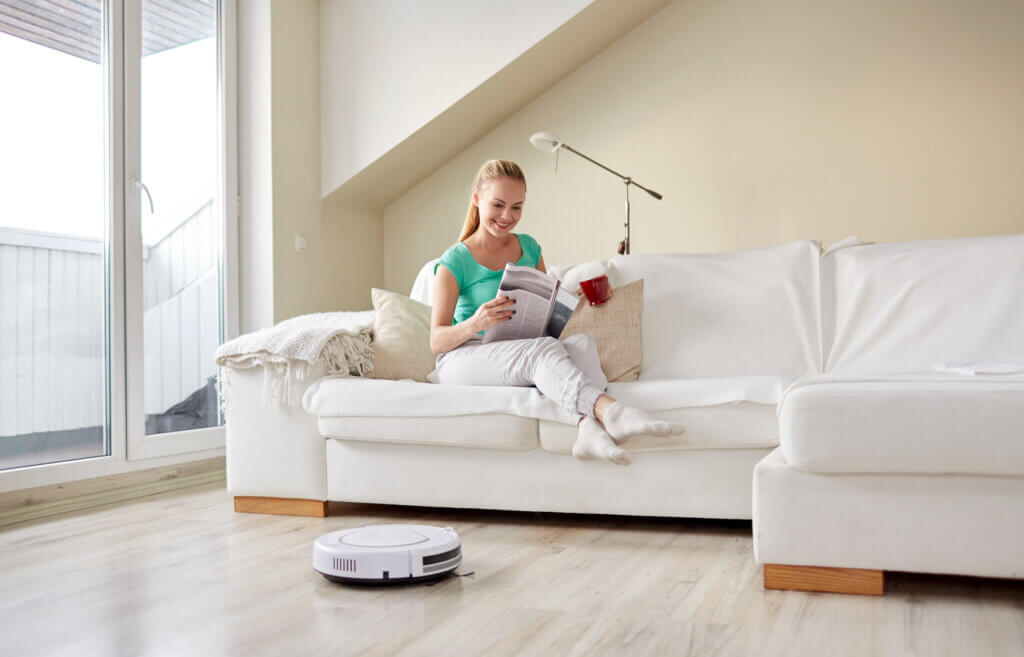
House dust – what is it actually?
In German households, about 6.2 milligrams of dust per square metre accumulate every day. The more people live in a household, the more dust is produced. Dust is not only a waste product of fibres, but also consists of organic particles such as dead skin flakes, animal and human hair and fungal spores. Carpets in particular form an ideal hearth in which germs and bacteria multiply, which can trigger allergies such as skin irritations. To avoid this, it is important to remove dust regularly.
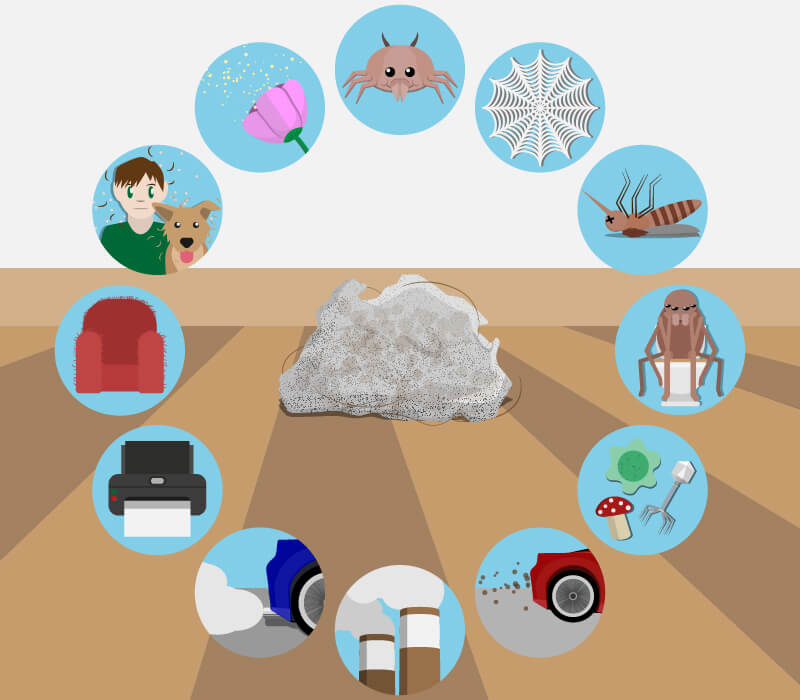
George – the forefather of the robot vacuum cleaner
Robot hoovers are by no means a 21st century invention. The first household robot that could vacuum on its own was developed as early as 1949 by the British Tony Sale. George, as he called him, with his antenna and glowing eyes, however, hardly resembled the models we know today. In 1978, Nintendo created a robot vacuum cleaner called Chiritorie, which had a remote control, a rotating axle and a collection bin. Although it was much easier to handle, it was also very wobbly. Seven years later, the Dustbot appeared on the market, the first robot hoover with a built-in vacuum that could even suck up crumbs and small pieces of paper. Over time, the robot vacuum cleaners not only became smaller and more sophisticated, but also cheaper. Today, the practical household aids are no longer available for several thousand euros, but for as little as 200 euros.
The miniature cleaning fairy for little money?
Since robot hoovers are nevertheless considerably more expensive than ordinary floor hoovers, many consumers wonder whether such an expensive purchase is really worth it. However, they do not have to spend a fortune on a solid robot vacuum cleaner. The cost factor reflects not only the suction power, but above all the range of functions of the device. There are now models in a wide range of price categories, so there is something for every budget. The cheapest devices start at around 80 euros, the most expensive ones cost around 1,000 euros.
| Price range | Furnishing |
| 80 to 200 euros | Cheap devices mainly cope with smooth floors, have low battery runtimes and their room recognition is not very sophisticated. |
| 200 to 500 euros | Medium-priced devices are suitable for different types of soil, are equipped with programming functions and offer a longer battery life with a comparatively high suction power. |
| 500 to 1,000 euros | Expensive devices are equipped with high-tech functions, work with high wattages and long battery life and are also suitable for large rooms of over 100 square meters. |
The advantages in the fight against dust and dirt
A robot hoover is usually a flat, cylindrical household appliance with a diameter of about 30 centimetres and a height of around 10 centimetres. This design allows them to reach hard-to-reach places, such as under sofas and cupboards. Depending on the navigation technique, the vacuum cleans up to 80 square metres in a single pass.
If the device has a timer function, the user has the option of having the suction process start automatically at a later time, for example when he or she is not at home. On its vacuuming tour, it not only avoids obstacles, but even overcomes carpet edges and detects stairs or higher landings in time to avoid a fall. Since the self-sufficient household aid is battery-powered as standard, it must be recharged afterwards. After the vacuuming round, the robot returns to its charging station and only resumes its work when the battery is fully charged – ideally at the point where it previously had to stop due to declining battery power. The user therefore only has to worry about emptying the dust container regularly. Robot vacuum cleaners do not need bags at all.
The typical structure of a robot vacuum cleaner
The decision as to whether the robot vacuum cleaner should be square or round is primarily a question of aesthetics. For most consumers, a round shape looks more modern and generally more positive than an angular design, which is often perceived as colder. Some manufacturers also design the housing playfully so that the robot vacuum cleaner becomes a visual highlight: For example, there is a robot vacuum cleaner in Darth Vader design that has sound effects such as the typical rattle or hiss of a lightsaber and plays the Imperial March.
In terms of their basic design, however, most models are similar: on the top is the dust container lid, under which is the collection box, an LC display with control indicators and a bumper with the obstacle sensor. On the sides are the exhaust vents and the main power switch. On the bottom of the unit are the charging contacts with the fall sensors, the wheels and the brushes.
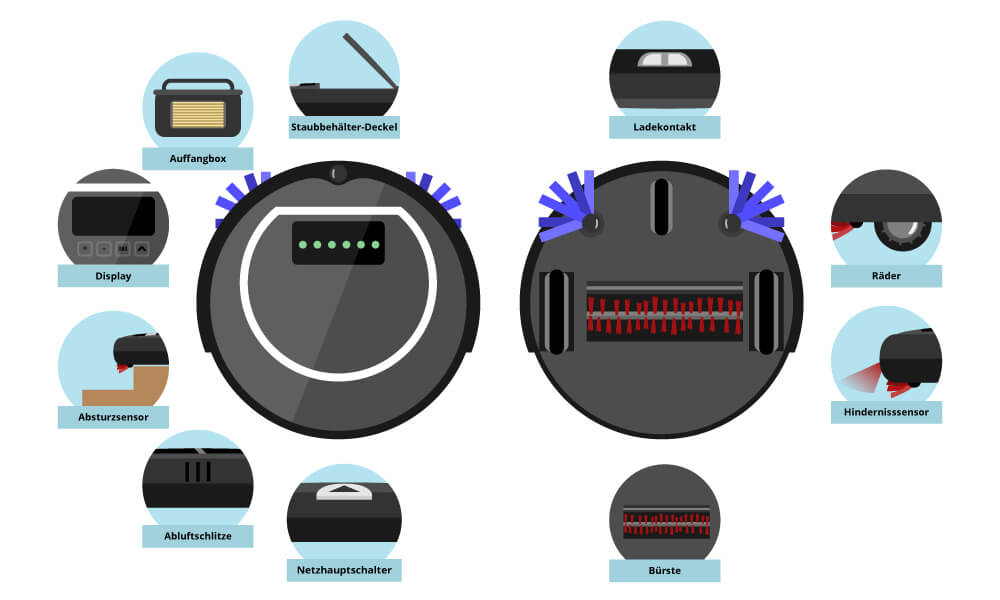
The pros and cons of an autonomous hoover
Both autonomous and effective, robotic hoovers make household chores easier for consumers and save a considerable amount of time. In addition, they reach places that are difficult or impossible to reach with a floor hoover. Their back-friendly handling is not only optimal for older people, but also for all those who reach for the hoover every day. Robot vacuum cleaners are also excellent for allergy sufferers: Most models have a HEPA filter that thoroughly removes not only dust and pollen but also animal hair. Another advantage of the small machines that should not be underestimated is that they are much quieter than their larger competitors.
HEPA filters – cleaning at a high level
High-efficiency particulate air filters are so-called HEPA filters. They consist of several thin layers made of synthetic materials such as cellulose or glass fibres. Their close-meshed fibre network filters even the smallest particles particularly effectively, so that they remove over 99.9 percent of all particles from the air.
However, if the path of the hoover robots is blocked, depending on the programming, an error message may be generated so that they abort the cleaning process. The natural enemies of the robot vacuum cleaners include high-pile carpets, corners, cables, reflective surfaces and fragile objects such as vases. While short pile carpets are usually not a problem, there is a risk with high pile variants that the brushes get caught in the pile layer. Another shortcoming is the comparatively small dust container, which users have to empty frequently. In addition, the autonomous household aids are also considerably more expensive than floor hoovers.
However, if a few basic requirements are met, at least one powerful model can also serve as a worthy replacement for the floor hoover:
- Floors should be mainly smooth coverings such as laminate, tiles or parquet.
- Carpets should not be higher than three centimetres and should not have fringes.
- The rooms should not be too angled or cluttered with furniture.
Advantages
- Work independently
- Great time saving
- Cleans even hard to reach places
- Comparatively quiet in operation
- Suitable for allergy sufferers
- Easy on the back
Disadvantages
- Weaker suction power
- Poorer cleaning of corners and edges
- Not suitable for high pile
- Relatively small dust container
- Higher purchase costs
Brushes, sensors and time control: How it works
The exact way a robot vacuum cleaner works varies depending on the manufacturer and model. However, they are all the same in one thing: they move independently through the room. To do this, they are equipped with two rollers that operate the drive wheels. Thanks to the suspension, they ensure that the device overcomes doorsteps and other small obstacles with ease. The steering wheel, which is located on the front, navigates the hoover in any direction through the room. With the help of this wheel combination, the robot is very mobile and can even reach areas that are difficult to access.
On the underside of the device are counter-rotating brushes that first loosen the dirt and then transport the particles under the housing. There, the robot sucks in the dirty air and brings it through an opening into the interior of the hoover, where there is a dust container that collects the collected dirt. Models with side brushes clean corners and edges even more thoroughly from dirt and dust particles. After the cleaning process, users empty the collection bin manually.
To enable the hoover to detect larger obstacles, it is equipped with sensors. These are transmitters that inform the robot about the area to be vacuumed. The navigation system ensures on the one hand that the device cleans every surface in the room and on the other that it avoids crashes or collisions with furniture, walls or toys. The collision sensor ensures that the robot vacuum changes its direction as soon as it bumps into an obstacle. Modern devices are equipped with infrared, ultrasonic or laser sensors, thanks to which the robot hoover recognises an object that is in the way in good time and drives around it. The fall sensor registers steps and other precipices and prevents the robot from falling down.
Ready for anything: the different cleaning modes
Depending on the surface, the degree of dirt and the structure of the room, different cleaning principles are suitable. The latest robot hoovers are therefore equipped with a variety of modes to be prepared for any situation:
Carpet mode
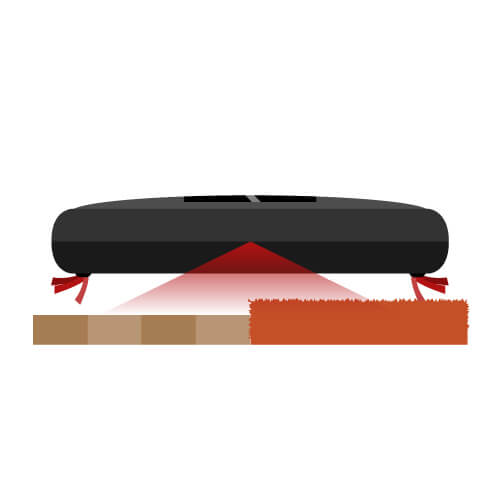
Thanks to built-in sensors, modern vacuum robots recognise whether the surface is a smooth hard floor or a carpet and adjust the cleaning process accordingly. If it is a carpet, the smart device automatically switches to carpet mode. For example, they change the speed of the brushes on carpeted floors and increase the suction power at the same time. On smooth floors, they work more gently on the battery.
Turbo mode
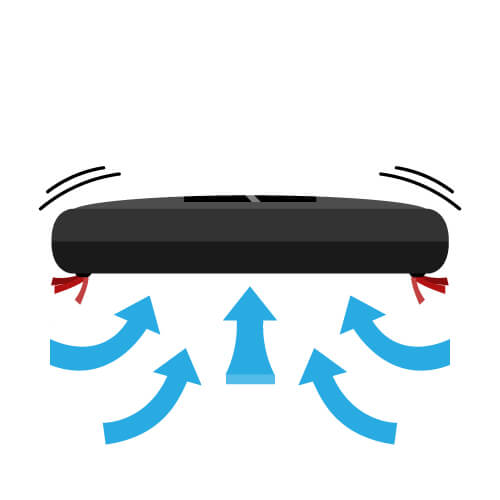
By switching on the so-called turbo mode, also called “max power”, the Robot Vacuum Cleaner obtains a significantly higher suction power; this means that the rotation speed of the main brush increases.
Edge mode
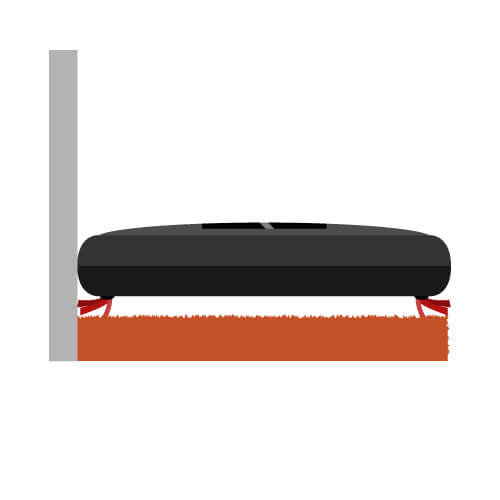
In Edge mode, the cleaning of corners and edges is particularly thorough thanks to the side brushes.
Intensive mode
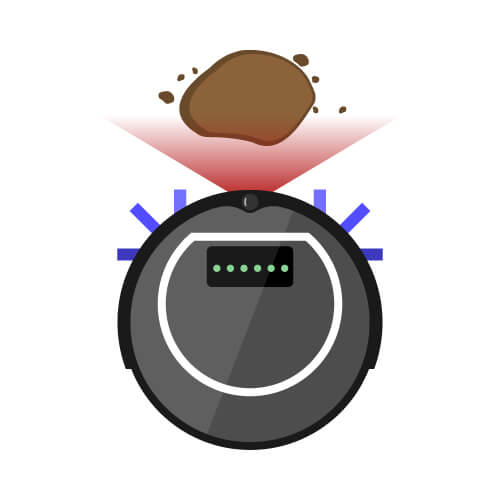
The special cleaning mode is switched on either manually by the user or automatically for particularly dirty areas. Often there are additional sensors inside the device that check visually or acoustically how dirty the floor is. Acoustically, for example, this works by detecting the noise that coarse dirt makes when it is spun around in the collection container. Visually, a light barrier identifies the dirt particles. The robot vacuum cleans the corresponding areas more intensively, for example by running over them several times.
Chaotic or with a system? The driving strategies
With regard to the navigation system, there are two types of robot vacuum cleaners: devices that work according to a systematic cleaning principle and those that drive over areas chaotically. The latter are significantly cheaper.
Chance is the deciding factor: The unsystematic driving strategy
The most widespread robotic vacuum cleaners are still those with a non-systematic cleaning principle, because they are particularly cheap to buy. In this context, unsystematic means that the robot hoover vacuums without a predefined pattern and clears its way solely on the basis of the contact sensors. This random principle, which is also called zigzag mode, often leads to some areas not being cleaned at all or being cleaned several times. As soon as the cleaning helpers come across an obstacle, be it a cupboard or a decorative item, they change direction and drive straight ahead again until they bump into something – or until their battery is empty. While the chaos principle is more likely to remove stubborn dirt residues, users often still have to do it themselves to get a consistent result. The time factor also plays a decisive role here: the longer the process takes, the more likely it is that every spot will also be cleaned.
A kind of bumper is attached to the robot, which triggers one of the usually three micro-switches when it comes into contact with an obstacle and turns to the left, right or back accordingly. Robots with such touch sensors therefore constantly collide with furniture or walls, but thanks to suitable materials, such as a rubber strip, they are designed in such a way that neither the objects nor they themselves are damaged. If, for example, the right edge of the appliance bumps into something, it first tries to move to the right. If it does not succeed, it turns away at the same angle until it can continue the cleaning process.
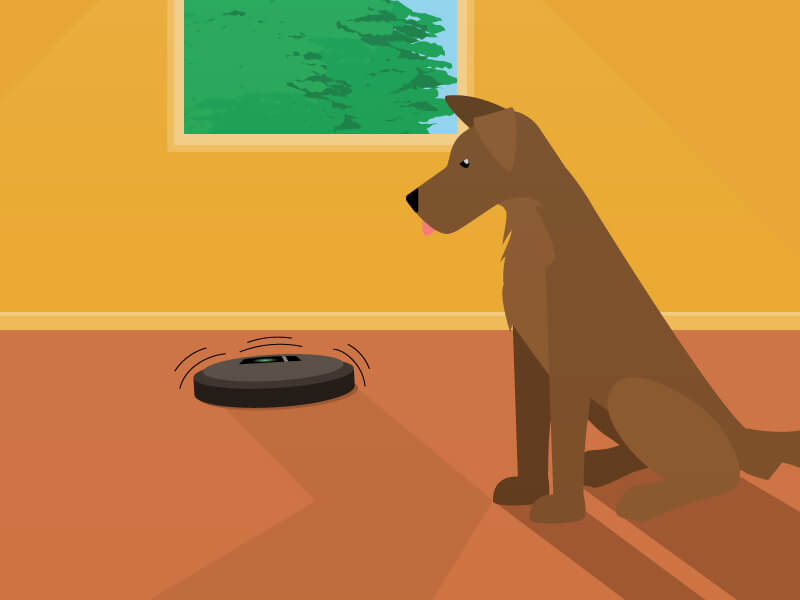
In the unsystematic approach, a distinction is made between the amoeba strategy and the random strategy, which are very similar, at least in terms of their haphazard driving style. With the amoeba strategy, the robots travel as long as possible in a straight line and, in the event of a collision reported to them by contact sensors, change their direction of travel so that they again travel a long straight line. A random strategy device, on the other hand, randomly interrupts straight travel and selects its new direction of travel according to the random principle. Suction robots that work according to the random principle miss less than their amoeba counterparts and are correspondingly more efficient than the amoeba strategy, but in winding or tightly furnished rooms it happens more often with both driving methods that the robots get stuck.
Following a certain pattern: the systematic driving strategy
Since purely random drives do not cover one or two places or drive twice, they are not very efficient. Driving according to a plan makes more sense because the area to be cleaned is mapped in advance with a camera or laser and then driven over according to a certain pattern, for example in a spiral. Systematic hoover robots are therefore more intelligent and have more complex sensors that analyse their surroundings in order to brake and change direction in time if necessary. To calculate distances, manufacturers now use sophisticated infrared or ultrasonic sensors as well as laser technologies. Since the robot knows the exact distance with them, collisions no longer occur in the ideal case. Instead, it stops and changes direction. To compensate for the disadvantages of the different sensors, several technologies are often used. Infrared sensors have problems with deep black objects because they reflect the measurement signal and are therefore overlooked. Ultrasonic sensors, on the other hand, struggle with narrow objects that reflect the sound differently.
Surveying by wall tracking
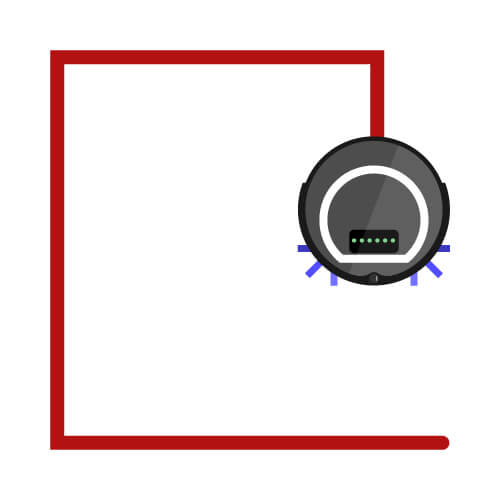
As a rule, all modern robotic vacuum cleaners have mastered the strategy of wall tracking. They first try to drive along the walls of a room – on the one hand to clean this area, and on the other hand to measure the room. Any furniture standing against the wall is circumnavigated. The rotating side brushes are also helpful here, as they pick up dirt from around the edges.
On Spot: The spiral drive
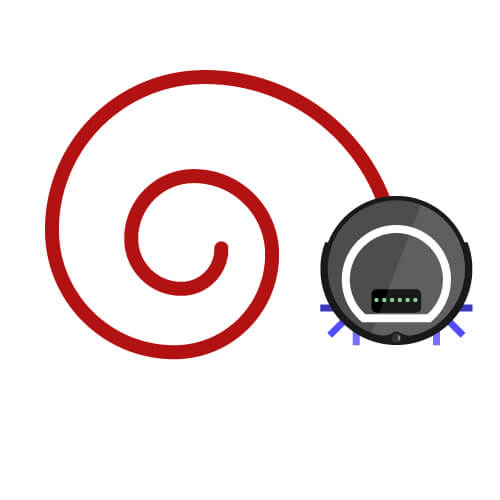
Another strategy of modern robot vacuum cleaners is the spiral mode, also known as spot mode, in which the device travels a certain distance from a centre point to the outside or vice versa in a spiral. This mode is used, for example, for larger free areas or large areas of dirt in a certain place, as the tracks overlap slightly and in this way clean an area in a targeted manner.
Room mapping via camera
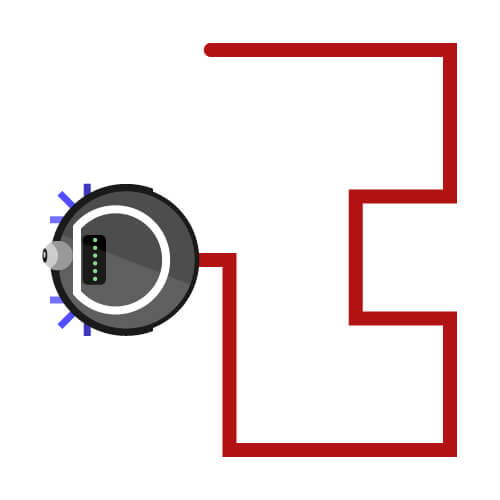
Some manufacturers rely on built-in cameras on the top of the device that scan the room and then create a kind of map. They register the positions or sizes of the furniture and divide the room into individual segments. With the help of room mapping, i.e. room recognition, the robots can clean the room in a planned, speedy and particularly efficient manner, lane by lane, in each subsequent process.
Virtual walls thanks to lighthouse technology
A special feature is the so-called lighthouse technology, with which users can make certain zones within a room inaccessible to the vacuuming robot, for example, for safety reasons. This usually involves a hand-sized plastic cylinder that emits infrared rays and is switched on at the touch of a button. If a beacon, i.e. the virtual barrier, is placed at a location, the device cannot enter this area. As soon as the robot starts moving, this virtual wall is activated.
For example, users can use it to block door thresholds so that the robot vacuum cleaner only cleans the desired room. This technology is also advantageous when consumers want to separate certain objects, such as their pet’s water bowl or the floor vase, so that no water is spilled or the fragile object is even damaged. In addition, an entire work area, for example the desk at which one is currently sitting, or the area around the dog basket in which the four-legged friend is sleeping, can also be delimited.
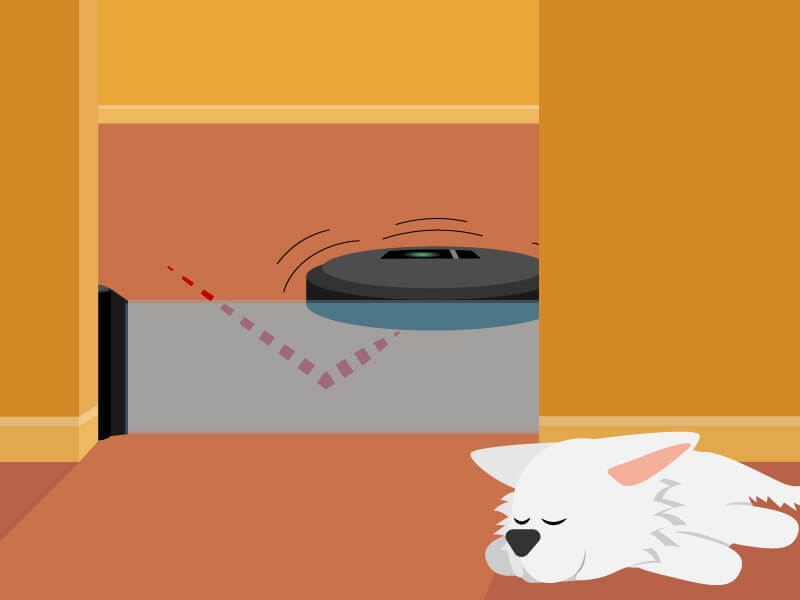
Which strategy is the right one?
As a rule of thumb, the more sensors attached to the robot hoover, the more effective its mode of operation. If there is a lot of deep black furniture near the floor, infrared sensors are not enough. If there are stairs in your own four walls, it is also recommended that the robot vacuum cleaner is equipped with a fall sensor. While in large, relatively furniture-free rooms a planned, parallel driving strategy is ideal, in packed rooms where chairs, sofas and co. make navigation difficult, a random strategy is more suitable.
From the right height to the right filter – the buying criteria
Due to the different features that robot hoovers bring with them, many consumers find it difficult to make a purchase decision. So what is important when buying a robot vacuum cleaner?
Height
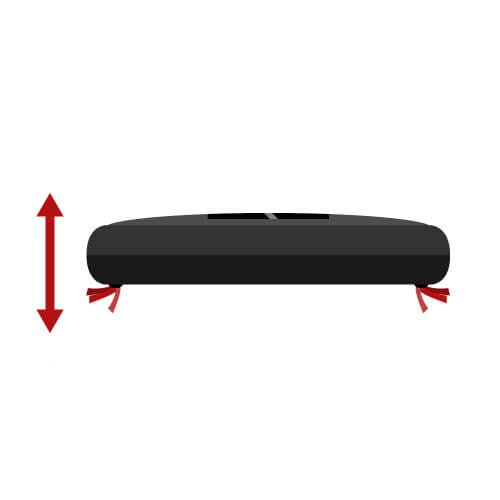
Basically, all robot vacuum cleaners are characterised by a low height. Depending on the model, it ranges from eight to ten centimetres. The lower the height, the more likely they are to reach under beds, sofas and cupboards that an ordinary hoover would not reach. Therefore, it is important to measure the distances between the floor and furniture before buying. However, higher-built robot hoovers also have their advantages, because they can more easily overcome small steps, for example carpets.
Capacity
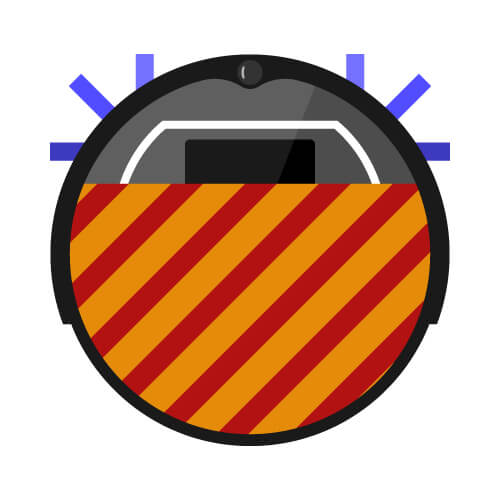
The capacity of the dust box is also related to the height, because the higher the robot is, the larger the dust box usually is. The volume usually varies between 0.2 and 0.8 litres. The larger and dirtier the area, the faster the box fills up. Since a box with a capacity of 200 millilitres has to be emptied correspondingly often, in many cases it is more advisable to choose a size between 500 and 600 millilitres. However, this depends not only on the size of the area to be cleaned, but also on other circumstances, such as whether there are pets or children in the household who cause dirt.
The suction power
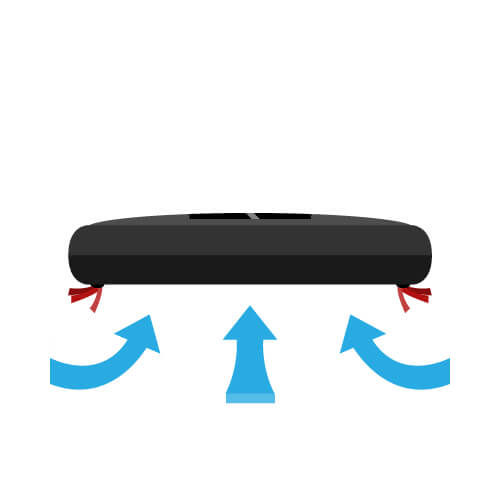
The wattage of a robot vacuum cleaner is usually in the double-digit range. Unlike its big competitors, which work with over 1,000 watts, a high output power is not necessary here to achieve a satisfactory cleaning performance. More wattage does not necessarily mean more suction power, but above all higher power consumption. Robots with 40 watts often vacuum just as efficiently as a floor hoover with a much higher output. The reason: unlike a floor hoover, the robot does not have to transport the vacuumed material over a long pipe into the dust container.
The noise level
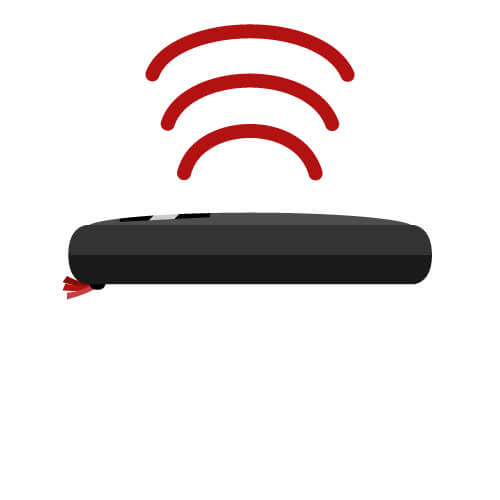
Although the small household aids are not completely silent, their noise level of 50 to 70 decibels is lower than that of a conventional hoover, which reaches an average of 70 to 80 decibels. For comparison: the normal room volume of a radio or television is about 60 decibels. Thus, the robot vacuum cleaner could possibly disturb the movie night. Therefore, good devices are equipped with a time function that allows the user to start the vacuuming process when he or she is not at home.
The filter
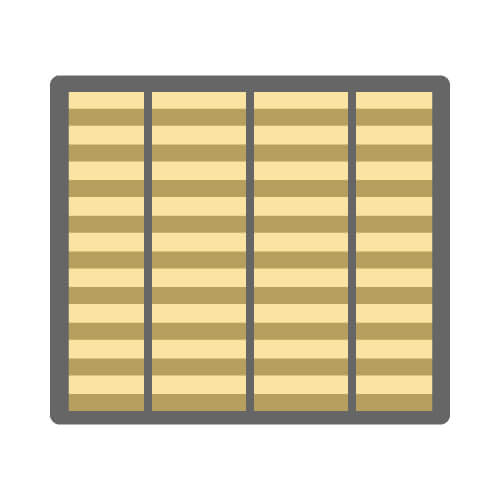
Since it is no use for the robot vacuum cleaner to capture the dust and then blow the fine dust back into the air, all modern models have a so-called HEPA filter (High Efficiency Particulate Airfilter). These filter pollen, asbestos, mites, suspended matter, bacteria and viruses from the air sucked in before it is blown out again, which is why allergy sufferers in particular get their money’s worth.
Battery life
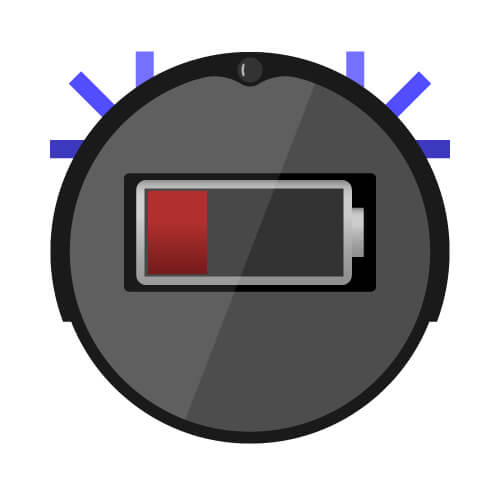
Unlike their big competitors, robotic vacuum cleaners come with a battery rather than a cumbersome cord. Most models are designed so that their battery lasts at least 45 minutes before it needs to be recharged. A few modern robotic vacuum cleaners can even manage 1.5 to 2 hours. Conveniently, most models have a display that informs the user of the current battery level. When the battery is running low, the robot automatically drives to its charging station. In general, a robot hoover should be able to clean an area of about 60 square metres in 60 to 80 minutes, i.e. on one battery charge. The larger the area, the more powerful the battery should be. A model with several batteries is recommended for large areas. In rooms with many corners or obstacles, the cleaning process will naturally take longer.
The charging time
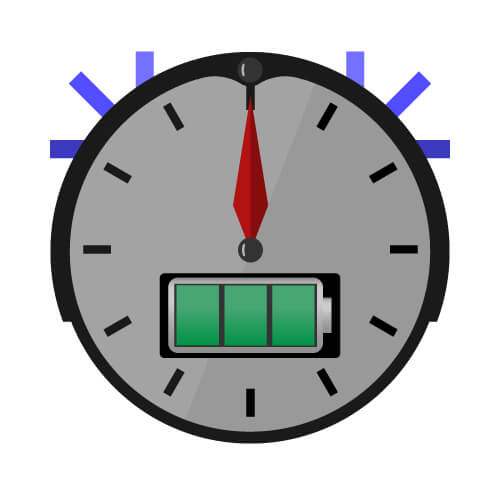
Just like the battery life, the charging time varies from manufacturer to manufacturer. The range is from one hour to five hours. Most robotic vacuum cleaners, however, need a relatively long time, namely three to five hours on average. In return, they drive back to their charging station independently and only continue their work when they are fully charged. So if you want to use your robot hoover more spontaneously, you should buy a model with a short charging time, i.e. between one and three hours.
NiMH or Li-Ion: Which battery is the best?
When buying a robot vacuum cleaner, customers decide between a NiMH and a Li-Ion battery. It is true that nickel-metal hydride batteries are better than their predecessors, the nickel-cadmium batteries, in that they are not subject to memory effect and have a higher energy density. However, at 0.28 megajoules per kilogram, their energy density is still lower than that of a lithium-ion battery at 0.65 megajoules per kilogram. This means that the latter not only survives twice as many charging cycles (500 to 800) as a NiMH battery (350 to 500), but also lives much longer, 2.7 to 4.4 years instead of only 2.0 to 2.7 years.
From all-wheel drive to smart-home connectivity – practical extras
There are significant differences in the equipment and scope of delivery. While the range of functions is very spartan in some devices, some high-priced models are equipped with numerous additional features. But which extras are desirable?
Timer-controlled: the timer function
Although the robot usually starts from its charging station on a timer and also returns to it independently, consumers have to carry the device to other floors (they weigh between 1.5 and 4 kilograms) because it cannot climb stairs. The timer function allows users to use the device at any time, as they can set when and for how long the cleaning should take place. For larger areas, the so-called multi-room function is also recommended, which ensures that the robot hoover continues its work after charging exactly where it left off before.
Docking, charging, emptying: The charging station
Before buying a robot vacuum cleaner, consumers should find out whether the charging station is included in the scope of delivery. As soon as the battery life comes to an end, the system signals the robot to stop the cleaning process and head for the charging station. It finds its way there by following an infrared beam. With the help of its 360-degree sensor, the robot vacuum cleaner locates the signal from every direction. Once it has located the signal, it immediately heads for the charging station to dock there. If the charging contacts are on the rear side, the device turns around to park in the right direction.
State-of-the-art appliances have already reached the point where they automatically empty their dust bin at the charging station, making them even more self-sufficient and relieving the user of another manual step.
Convenient control via remote control and app
With the help of a remote control, users can conveniently control their robot vacuum cleaner from a distance, for example to get it out from under the bed or to set the timer. Ideally, the cleaning modes can also be selected via the remote control. A remote control is also practical if, for example, crumbs fall on the floor while eating and you want to call the device to you. Robot vacuum cleaners with a Wi-Fi connection go one step further, because they can be controlled via an app. In this way, users can start their device while on the move. In addition, they can control the work of the device via the app: It shows whether it has already carried out all activities, whether cleaning has been completed successfully or whether it may have got stuck on an obstacle. With a smart home connection, for example via the Alexa tool, some robot vacuum cleaners obey their word. Nevertheless, it is better if the model also has buttons in case the Wi-Fi connection is interrupted.
The hybrid robot: a combination of wiping and vacuuming function
Some vacuum robots are also equipped with a mopping function so that they not only vacuum dirt but also damp-mop the floor. Since such devices combine two operations in one, this additional equipment is particularly recommended for households with floors that require regular damp cleaning. However, the function is not suitable for carpeted floors, but only for hard floors such as tiles, parquet and laminate. While inexpensive models use detachable wet wipes that do not mop very efficiently, higher-priced units have a combination water and dust container. The water tank consists of a split tank that separates the clean water from the dirty water.
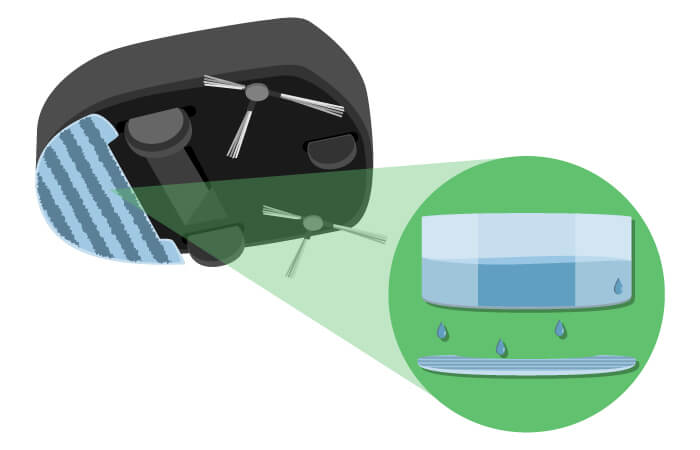
Optimised for pet hair
Since in households with pets there is a risk that the pet hair will wrap around the brushes and block them, there are special vacuum robots that are equipped with rubber rollers. These easily transport the pet hair inside the hoover. Other robot hoovers are equipped with special brushes that remove pet hair from carpets and floors more efficiently. Ideally, several attachments and suction devices for different areas of application are included in the scope of delivery.
Climbing hurdles with all-wheel drive and climbing assistance
Since doorsteps and carpets are often insurmountable obstacles for the small robots, some models have so-called climbing aids attached to the drive wheels. In addition, they have all-wheel drive so that they can easily bridge a height difference of up to two centimetres.
Practical cleaning tips – because robotic vacuum cleaners also need care
Although a robot hoover takes a lot of work off the user’s hands, one must not forget that it itself also needs cleaning from time to time. Only those who maintain their robots regularly will benefit from the little household help in the long term. There is much more to it than just emptying the dust container, namely cleaning …
- … the main brush: Since the main brush is the first to come into contact with dirt, a lot of dirt, dust and hair collects here. Before the user cleans the brush with lukewarm water and the cleaning tool included in the delivery, coarse dirt such as hair should be removed from the bristles by hand.
- … of the side brushes: Since a lot of dirt also accumulates in the thread, it is recommended to remove the screws and take the brushes out of the holder. Once the dirt in the thread has been removed, the next step is to remove the hair and crumbs that are stuck to the brushes. Once the coarse dirt is removed, users hold the brushes under warm water to remove the fine dust as well.
- … of the wheels: Dirt accumulates especially in the wheel housings. This should be removed regularly to ensure that the appliance runs smoothly.
- … the dust container: It is best for users to open the dust container directly above the dustbin, as dirt could fall out. Not only should you empty it regularly so that it can continue to collect dust, but you should also clean it with a brush so that it does not become too dusty. Hot water can also be used to remove germs. Afterwards, users should dry it thoroughly before using it again.
- … the sensors: Users should only clean the sensitive sensors very carefully with a microfibre cloth. Chemical or alcohol-based cleaning agents are not recommended, as they could damage the sensors.
- … of the filter: If the filter is washable, you can save yourself a replacement or two. To clean it, simply hold it under running water and then let it dry.
- … the suction opening: The suction opening, from where the dust falls into the collection box, is often neglected, but it also needs regular cleaning, as dirt also accumulates here.
- … the surface: To remove dirt deposits on the surface of the appliance, a damp cloth with which users wipe the top, bottom and sides is sufficient.
In addition to cleaning, it is also important to check whether the battery needs to be replaced. After a certain time (usually two to four years), it becomes less effective or, in the worst case, defective. To replace it, users turn the hoover upside down, open the lid, remove the battery and insert the replacement battery. The old battery should then not be disposed of in the residual waste, but in a special green container, which can usually be found in supermarkets.

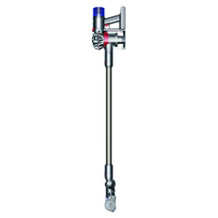
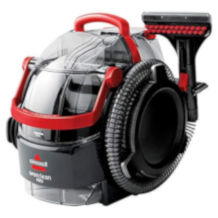
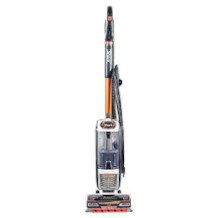
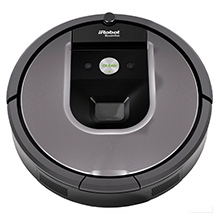
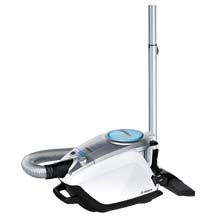
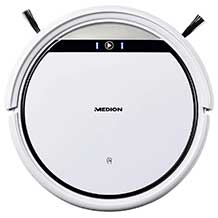
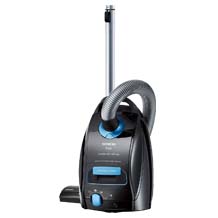
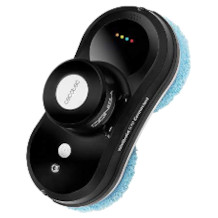

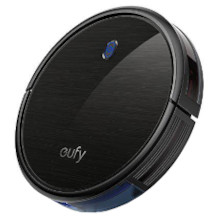
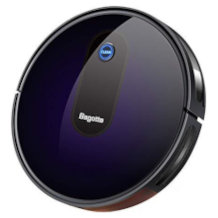
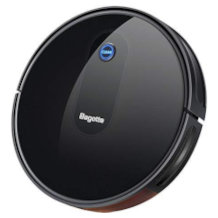
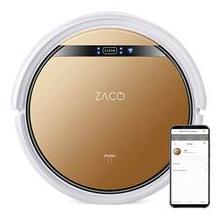
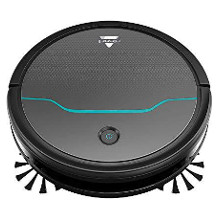
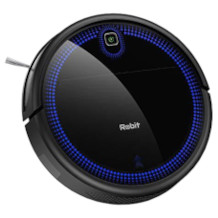
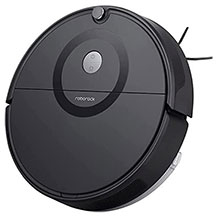
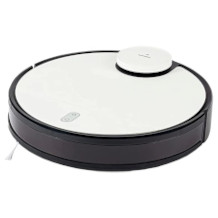
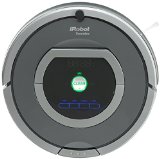
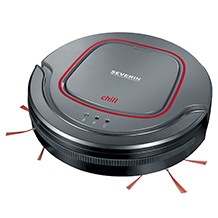
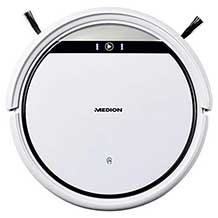
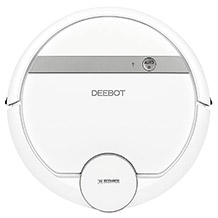
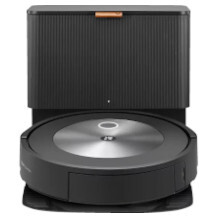
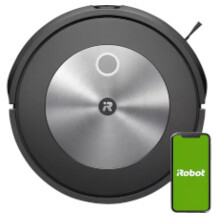
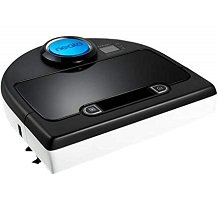

 6,433 reviews
6,433 reviews
